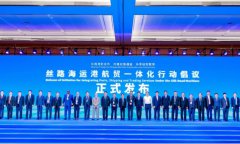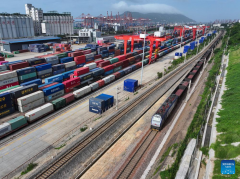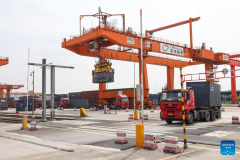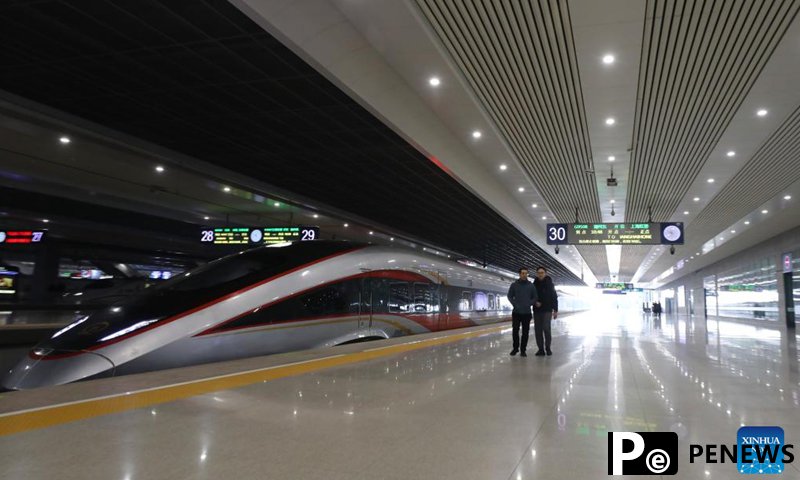Home>>
Reduced logistics costs help release China's economic vitalityBy Han Xin (People's Daily) 10:09, February 08, 2025
Logistics is the "lifeblood" of the real economy. In 2024, China's annual freight volume reached approximately 56.5 billion tons, averaging 150 million tons per day, with a year-on-year growth of about 3.5 percent. This effectively supported the stable and positive development of the national economy.
In recent years, the overall level of social logistics costs in China has been on a downward trend. The ratio of social logistics costs to GDP decreased from 18 percent in 2012 to 14.4 percent in 2023, meaning that the logistics costs incurred for every 100 yuan ($13.73) of GDP decreased from 18 yuan to 14.4 yuan.
How has the continuous reduction in total social logistics costs been achieved?
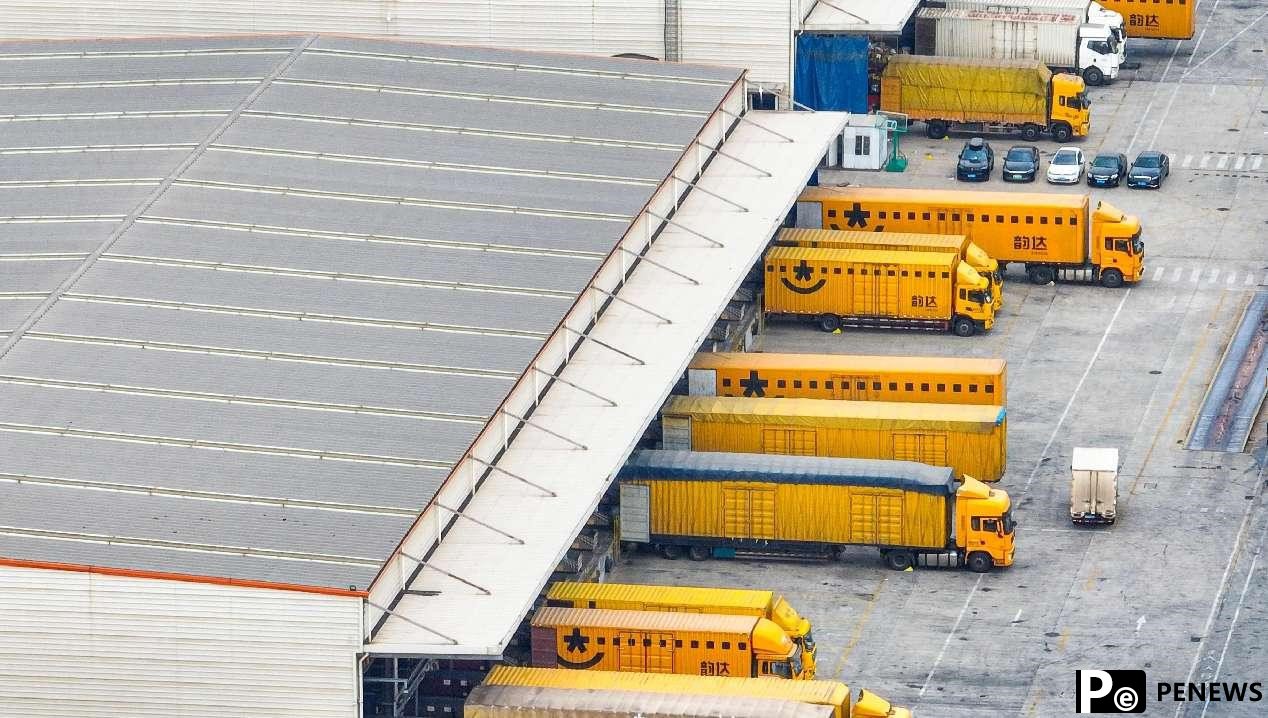
Trucks are being loaded in a logistics park in Ganzhou, east China's Jiangxi province, Jan. 24, 2025. (People's Daily Online/Hu Jiangtao)
The "Kawa Ningbo" vessel, departing from Ningbo-Zhoushan Port, arrived at Wilhelmshaven, Germany in the early hours of Jan. 24, taking only 26 days.
Behind this accelerated delivery lies a strategic integration of sea-rail intermodal transport and the "China-Europe Express" shipping route. The shipment contained furniture manufactured in east China's Jiangxi province, transported by rail from Ganzhou, Jiangxi to Ningbo-Zhoushan Port's Chuanshan port area, and then directly loaded onto the express line vessel for Germany.
"The China-Europe Express enables direct maritime delivery from our port to Europe, cutting transit time from 38 to 26 days," explained a representative of the Ningbo-Zhoushan Port. "Through coordinated rail-sea operations, containers can transfer from trains to ships without reloading, which significantly reduces logistics costs."
In 2024 alone, Ningbo-Zhoushan Port handled over 1.8 million twenty-foot equivalent units (TEUs) through its sea-rail intermodal services, achieving double-digit year-on-year growth.
China's ongoing optimization of its transportation structure has become a cornerstone for reducing logistics costs while enhancing service quality and operational efficiency. In recent years, the country has witnessed tangible progress in coordinated infrastructure development and systemic innovations.
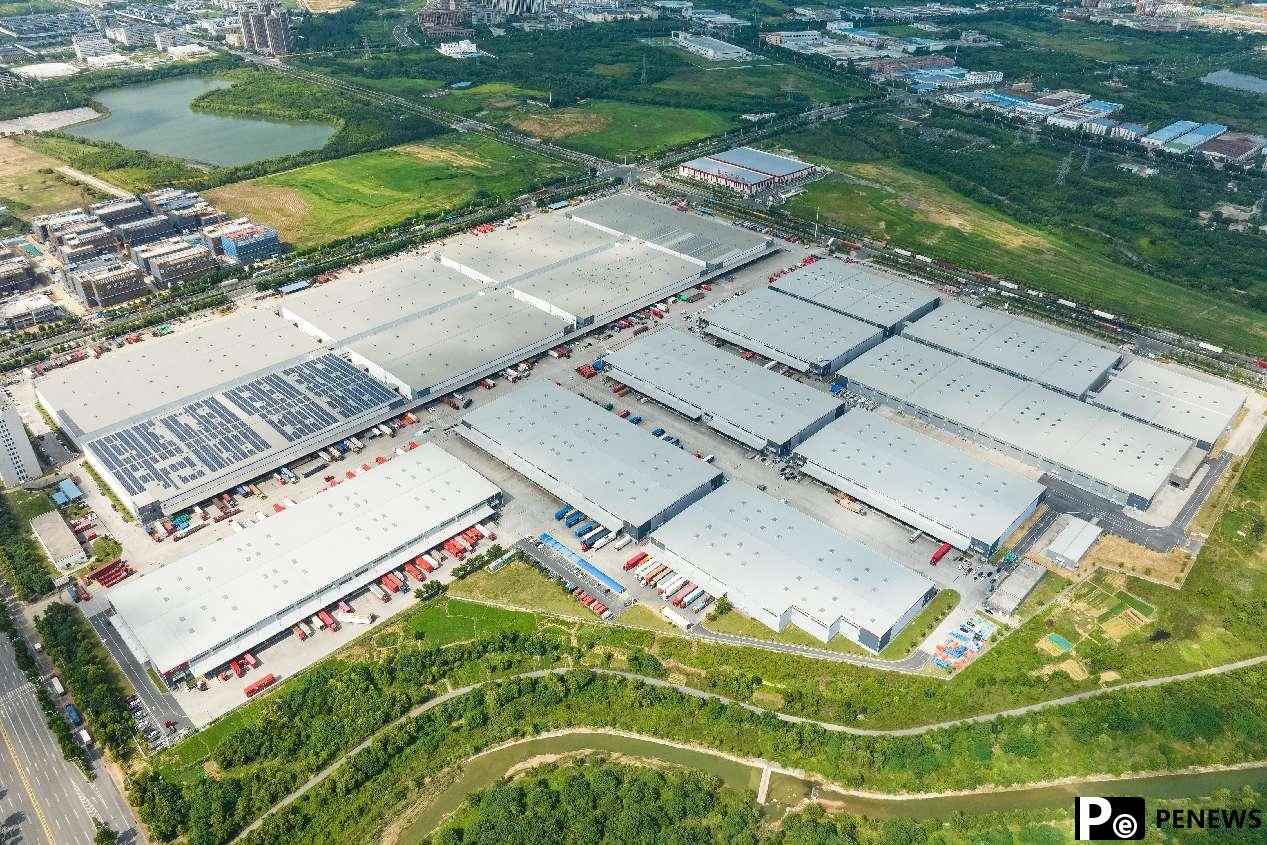
Photo shows a logistics park of JD.com in Hefei, east China's Anhui province. (People's Daily Online/Yuan Bing)
Key transport corridors like the New International Land-Sea Trade Corridor, the Yangtze River Economic Belt logistics network, and the intermodal transport network in central China have significantly improved regional connectivity. Strategic expansion of dedicated railway lines into industrial hubs, ports, and logistics parks has effectively addressed the critical "first and last-mile" connectivity challenges in rail transport, solidifying the infrastructure framework.
Various organizational models have emerged as innovative solutions - from high-speed rail express and double-stack container trains to multimodal express networks. Streamlined practices like unified documentation systems and standardized container management across transport modes exemplify breakthroughs in regulatory coordination.
In 2024, China's rail-water intermodal transport volume reached about 11.5 million TEUs, up 15 percent year on year.
The integration of next-generation technologies like AI and Internet of Things with modern logistics is unlocking new possibilities for cost-efficient, intelligent supply chains. Digital freight platforms and smart logistics solutions are reshaping China's transportation sector through data-driven optimization.
Fu Yefei, general manager of a textile company in Shaoxing, east China's Zhejiang province, illustrated this transformation. Previously, hiring on in-house drivers cost his company around 30,000 yuan monthly with frequent empty return trips and low efficiency. After adopting intelligent logistics platforms, AI-powered matching systems have reduced transportation costs by nearly 70 percent while boosting delivery efficiency by over 50 percent.
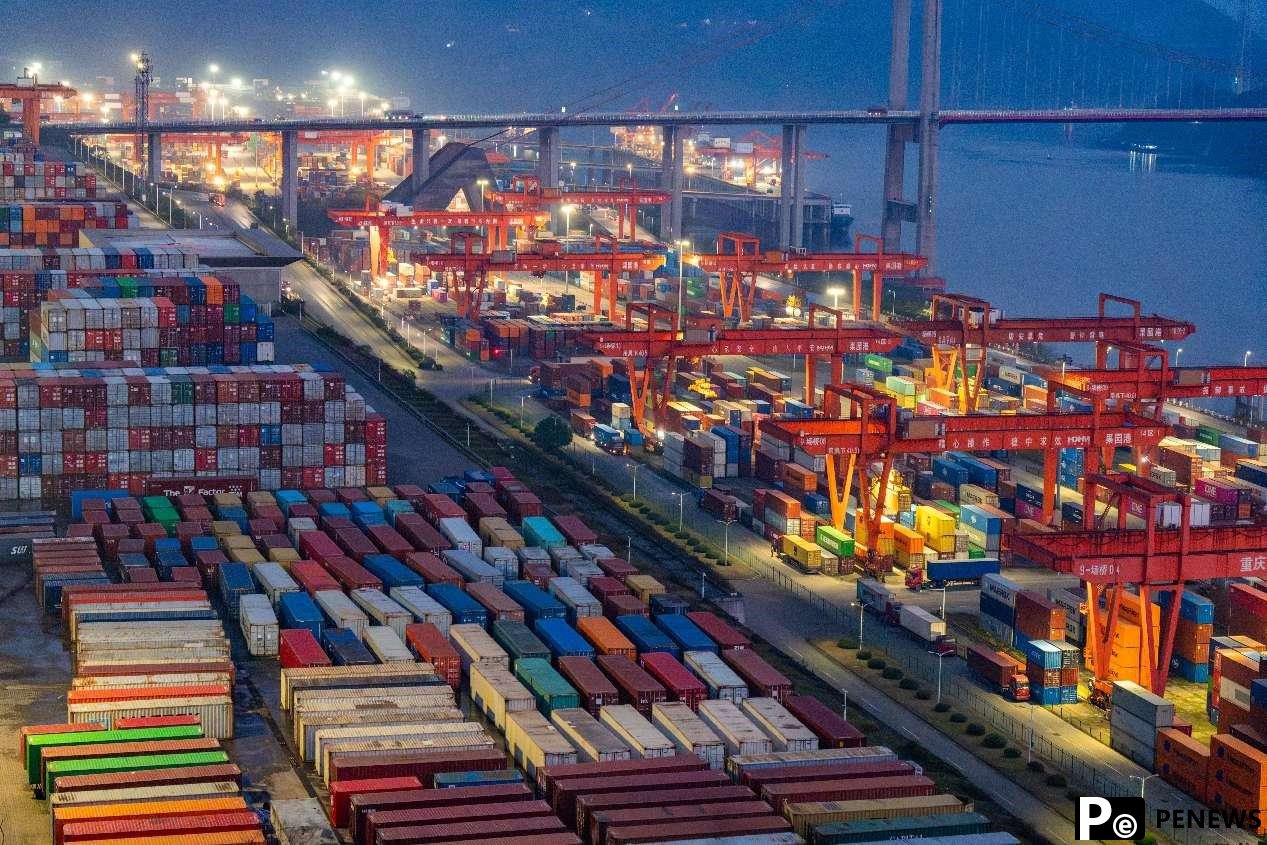
Photo taken on Jan. 11, 2025 shows the Guoyuan Port, a national logistics hub in southwest China's Chongqing municipality. (People's Daily Online/Li Hongbo)
"AI bridges the information gap between shippers and carriers, fundamentally lowering systemic logistics costs," said Zhang Hao, chief technology officer of Lalamove, a Chinese delivery and logistics company. The company's platform processed 1.86 million daily orders on average with a 92 percent successful matching rate in 2024.
According to statistics, China is home to 3,286 digital freight platforms coordinating over 8 million trucks and 7.3 million drivers nationwide. Compared to traditional methods, digital platforms have slashed waiting times from 2-3 days to 8-10 hours while reducing transaction costs by 6-8 percent.

